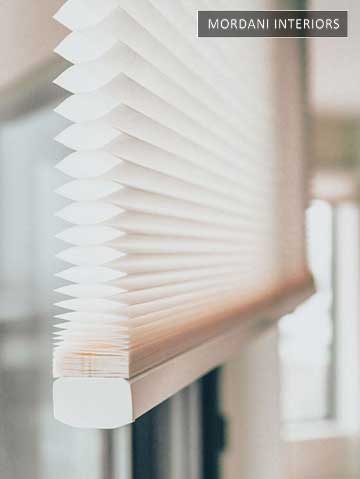What are honeycomb blinds?
Honeycomb blinds, also known as cellular blinds, are window coverings that feature a unique structure resembling honeycomb cell. They are typically made up of two or more layers of fabric that are joined together to form the individual cells. These cells are designed to trap air, providing insulation and enhancing the blinds' energy efficiency. The composition of honeycomb blinds involves three main components: the fabric layers, the cords, and the headrail. The fabric layers form the honeycomb cells and can vary in opacity, allowing for different levels of light filtration and privacy. The cords run vertically through the cells, connecting the top and bottom rails and enabling the blinds to be raised and lowered. The headrail is the horizontal component at the top of the blinds that houses the operating mechanism and controls. The manufacturing process of honeycomb blinds involves several steps. First, the fabric layers are cut into the desired width and length, considering the size of the cells and the overall dimensions of the blinds. Then, the fabric layers are bonded together, typically using heat or adhesive, to create the honeycomb structure. The cords are threaded through the cells, connecting the top and bottom rails. The headrail is attached, and the blinds are tested for smooth operation and proper functionality. Honeycomb blinds can be customized to fit different window sizes and shapes. They are available in a variety of colors, patterns, and opacities, allowing for personalized design choices. The cells can vary in size, with smaller cells providing a more refined appearance and larger cells offering a bolder visual effect. Overall, honeycomb blinds are crafted with precision and attention to detail to provide both functional benefits and aesthetic appeal in window coverings.
Akshata
29.05.2023
